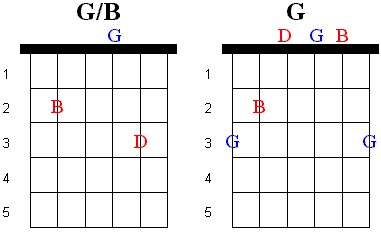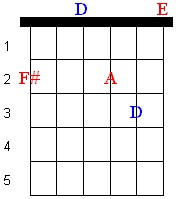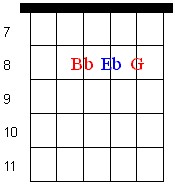Slash Chords
Let's look at G/B. It is read G over B. What you do is play a G major chord with a B as the bass note (The B is the lowest note of the chord). The G major chord's notes are G, B, and D. If you look at the diagram of G/B, you will notice that it has all the notes of the G major chord. The only difference is that the B is the lowest note, instead of the G. That is why it is named G/B instead of G.
You might ask why they name chords this way. It is just for clarifying the chord voicing. If you just said play a G major chord, I doubt that you would play G/B, but if I said play G/B, you would be forced to put that B as the lowest note in the chord.
In the examples below I gave you three slash
chords to look at. You will notice that the bass note is always a chord tone of
the underlying chord as I explained above.
|
|
Now Let's look at an Dadd9/F#, or Dadd9 over
F#.
|
Dadd9/F# |
Now, let's look at Eb/Bb, or Eb over Bb.
|
Eb/Bb |


